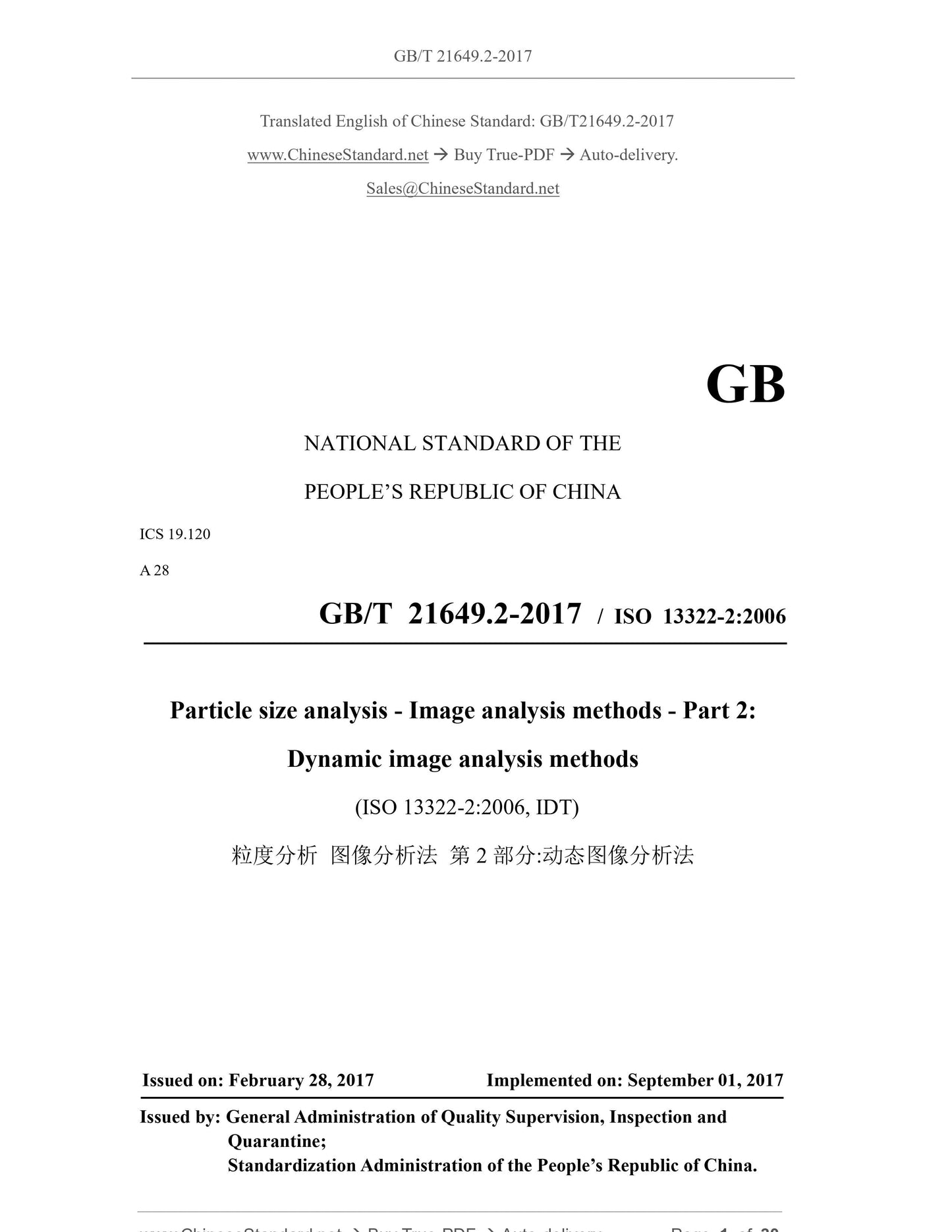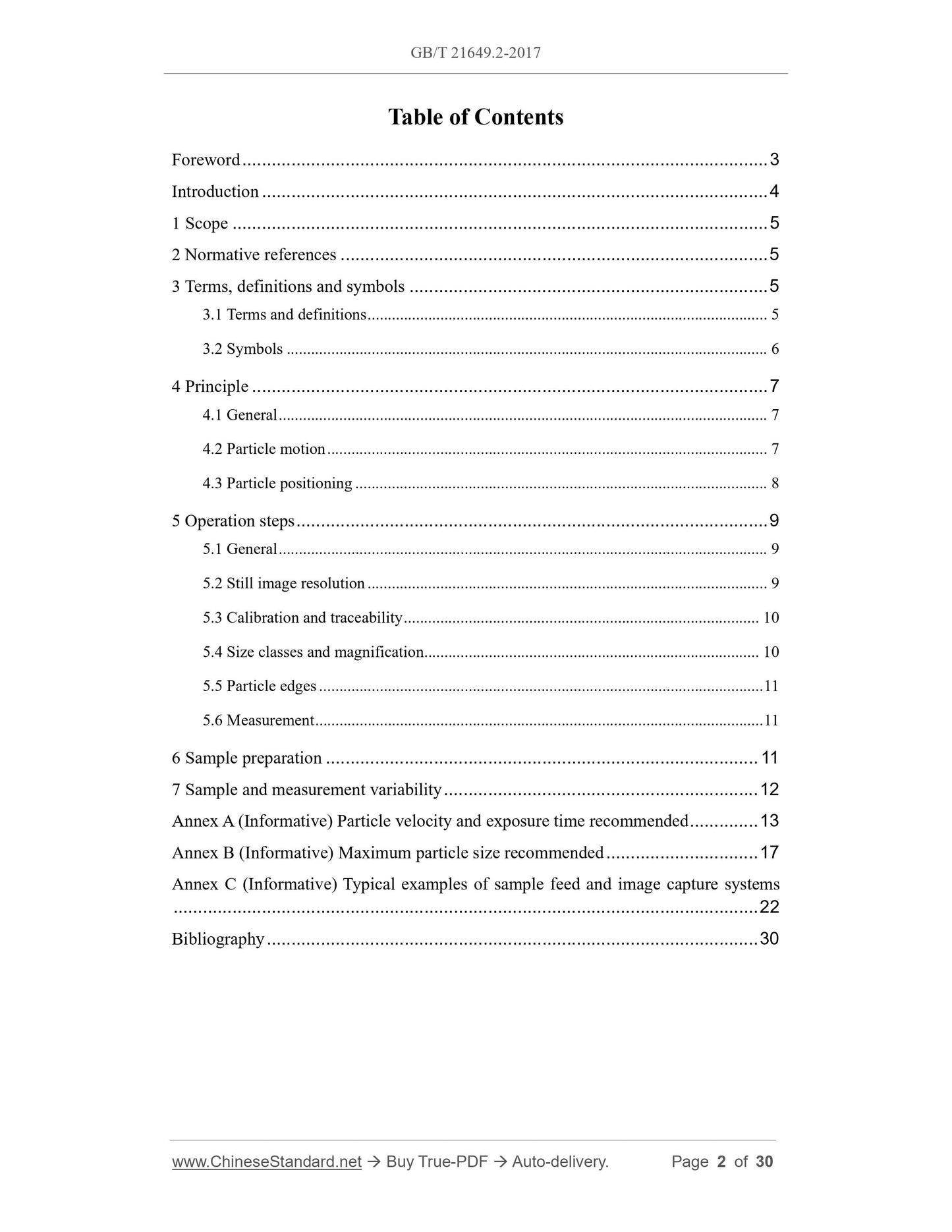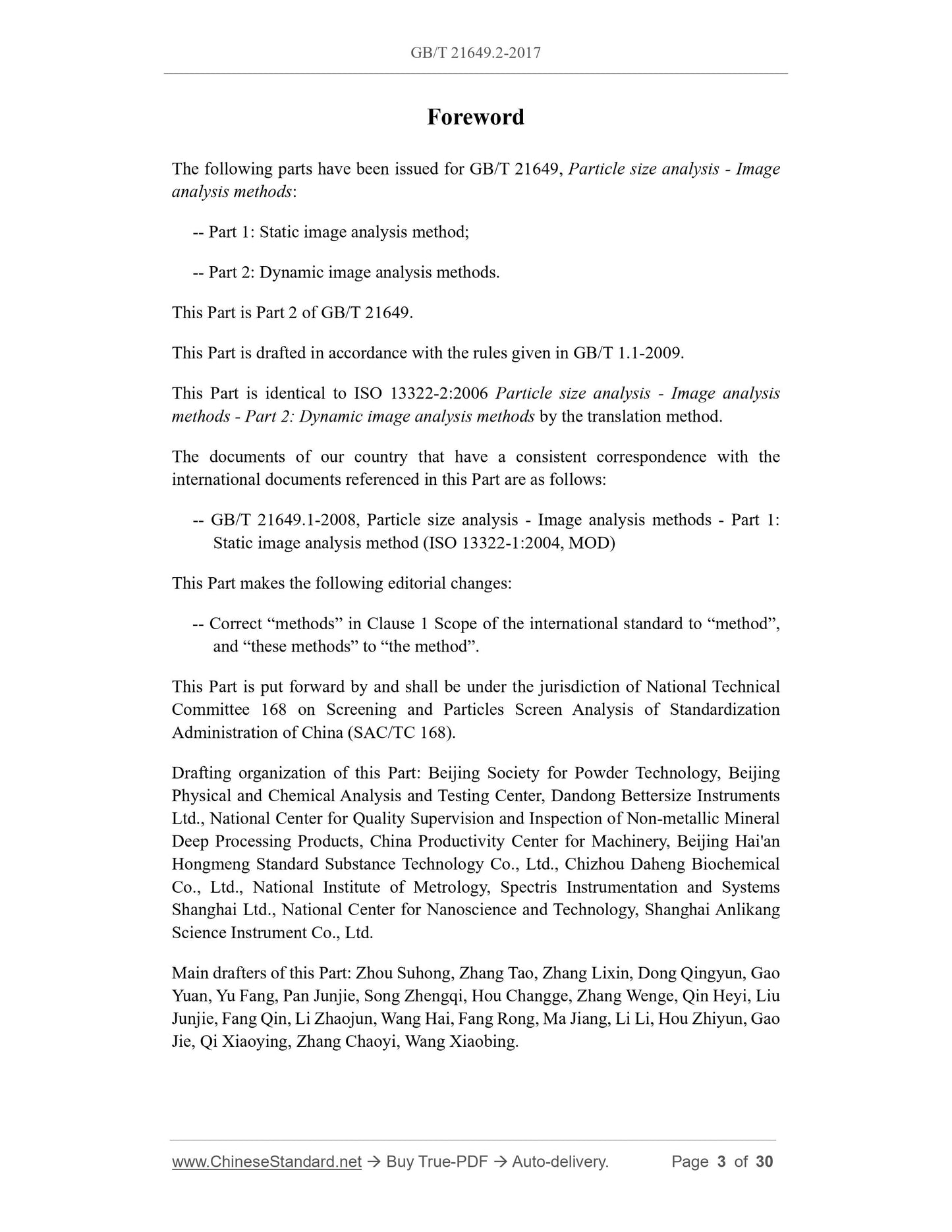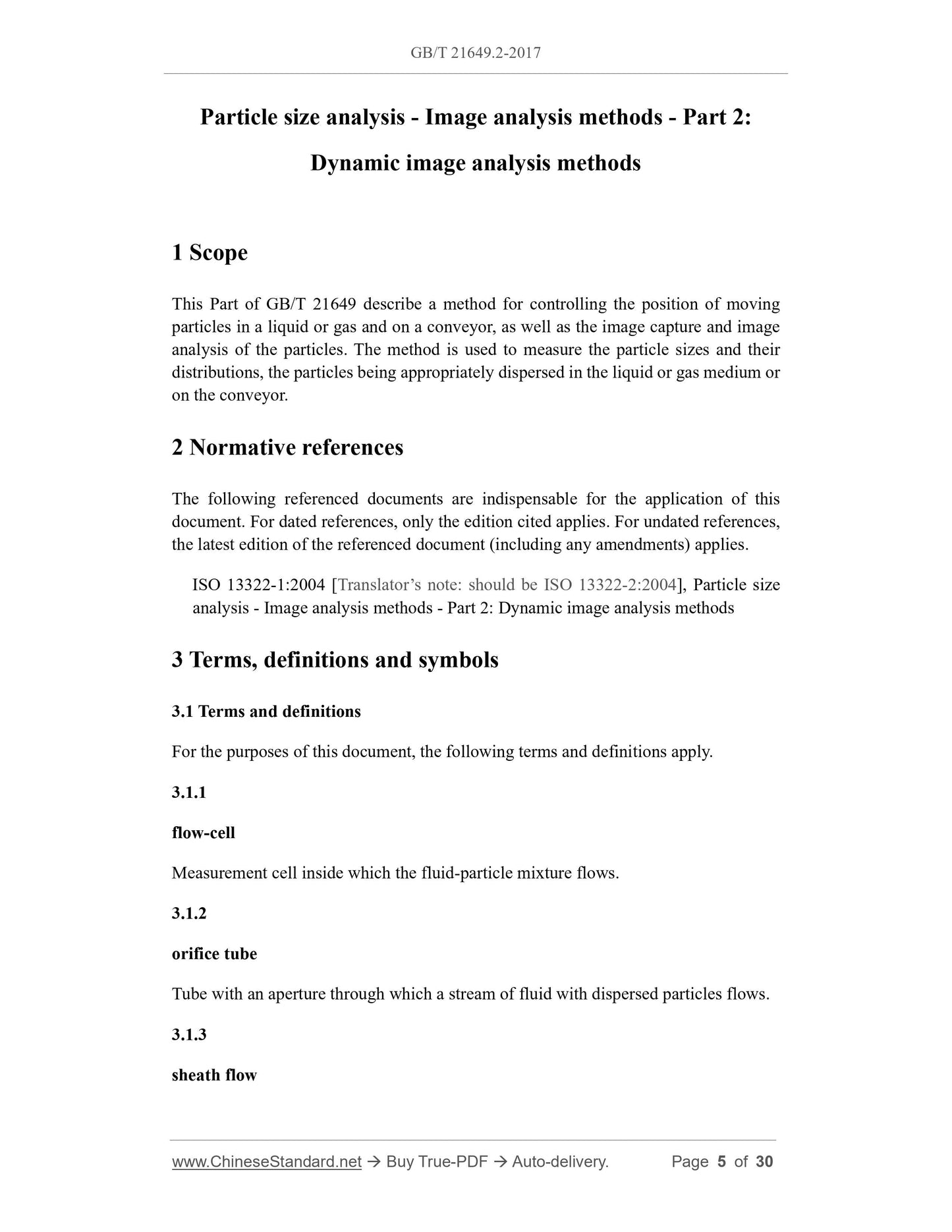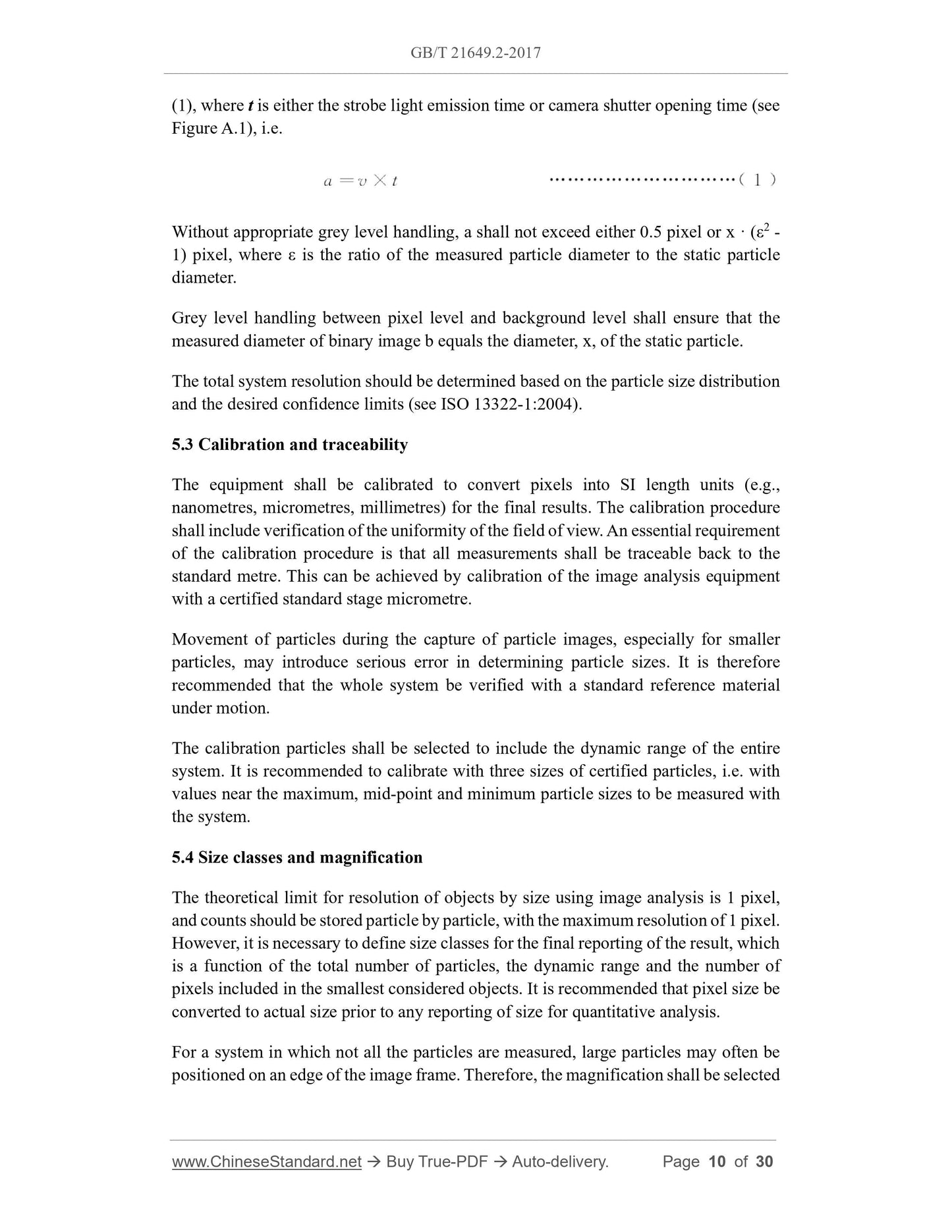1
/
of
5
www.ChineseStandard.us -- Field Test Asia Pte. Ltd.
GB/T 21649.2-2017 English PDF (GB/T21649.2-2017)
GB/T 21649.2-2017 English PDF (GB/T21649.2-2017)
Regular price
$340.00
Regular price
Sale price
$340.00
Unit price
/
per
Shipping calculated at checkout.
Couldn't load pickup availability
GB/T 21649.2-2017: Particle size analysis -- Image analysis methods -- Part 2: Dynamic image analysis methods
Delivery: 9 seconds. Download (and Email) true-PDF + Invoice.Get Quotation: Click GB/T 21649.2-2017 (Self-service in 1-minute)
Newer / historical versions: GB/T 21649.2-2017
Preview True-PDF
Scope
This Part of GB/T 21649 describe a method for controlling the position of movingparticles in a liquid or gas and on a conveyor, as well as the image capture and image
analysis of the particles. The method is used to measure the particle sizes and their
distributions, the particles being appropriately dispersed in the liquid or gas medium or
on the conveyor.
Basic Data
| Standard ID | GB/T 21649.2-2017 (GB/T21649.2-2017) |
| Description (Translated English) | Particle size analysis -- Image analysis methods -- Part 2: Dynamic image analysis methods |
| Sector / Industry | National Standard (Recommended) |
| Classification of Chinese Standard | A28 |
| Classification of International Standard | 19.120 |
| Word Count Estimation | 22,257 |
| Date of Issue | 2017-02-28 |
| Date of Implementation | 2017-09-01 |
| Quoted Standard | ISO 13322-1-2004 |
| Adopted Standard | ISO 13322-2-2006, IDT |
| Regulation (derived from) | National Standard Announcement No. 4 of 2017 |
| Issuing agency(ies) | General Administration of Quality Supervision, Inspection and Quarantine of the People's Republic of China, Standardization Administration of the People's Republic of China |
| Summary | This standard specifies the method of moving particle position control, image acquisition and analysis in liquid, gas or transportation. This method measures particle size and its distribution when the particles in the liquid, gas, or mobile carrier are effectively dispersed. |
Share
